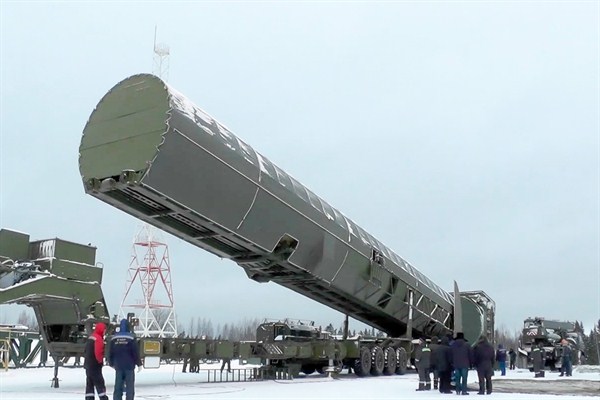Late last week, during his annual speech to the nation, Russian President Vladimir Putin unveiled a raft of new and exotic military weapons systems that were in development, and in some cases ready to be deployed. Putin’s inventory included an enormous, new heavy intercontinental ballistic missile known as “Sarmat”; new maneuverable re-entry vehicles that will, in theory, be fitted onto Russian ballistic missiles to help them overwhelm American missile defenses; a nuclear-powered cruise missile apparently able to fly for thousands of miles just feet above the surface of the earth; and a nuclear-armed underwater drone potentially able to lay dormant and then sneak close to an adversary’s coastline to a deliver a strategic blow in minutes. Putin also mentioned developments in hypersonic missile technology and even a possible future laser weapon.
All these new military developments, which Putin presented in an aggressive tone that included a video animation of advanced warheads falling on Florida, were quite clearly aimed at the United States. The choice of that American state, the home of President Donald Trump’s private club, Mar-a-Lago, hardly seemed like an accident. Putin appeared to be responding directly to Trump’s nuclear posturing and bluster, as well American plans to deploy increasingly capable anti-missile defenses.
This might seem like a return to the darkest days of the Cold War, but the political context of Putin’s speech is important. It comes just weeks after the Trump administration’s hawkish Nuclear Posture Review—widely considered to be a break from previous U.S. administrations—and just weeks before Russia’s presidential elections, when Putin is hoping to increase voter turnout and, of course, his electoral mandate. Parading new military prowess and stoking the old fires of U.S. militarism has worked out well for Putin before, and likely will again. There is even a competition in Russia to name the new cruise missile and drone.

